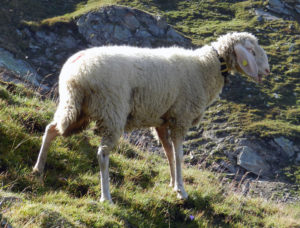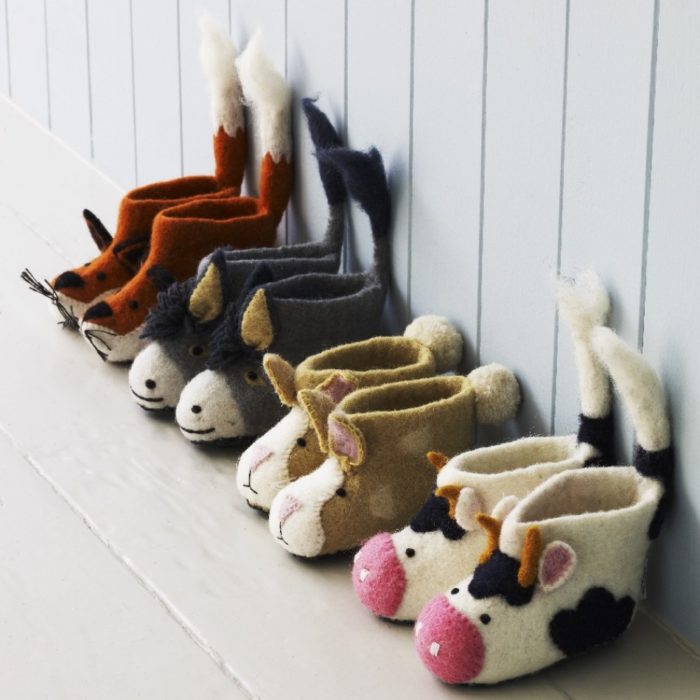A novice needlewoman, having decided to master the felting technique, will certainly be faced with a choice - which wool is best suited for making high-quality, comfortable and beautiful products. Experienced craftswomen, who have already created dozens of unique items by felting from natural products, recommend using wool in their work. Bergschaf.

Bergshaft wool - what is it, history

What is it, one of the most popular materials among handmade lovers. Bergschaf is the “coat” of the domesticated highland Tyrolean sheep (in German Tiroler Bergschaf). This type of sheep was bred in the 19th century by crossing two breeds: Austrian and Italian. As a result of the experiment, a rare species of lop-eared sheep was born with a small head, but with a long and wide back - an excellent platform for luxurious fleece. This breed of sheep is currently being bred in the Austrian Tyrol and Italian Bolzano.
Tiroler Bergschaf sheep are easy to keep even in difficult mountain conditions and rainy areas.
Strong legs with hard hooves allow animals to easily move along mountain slopes and plains, obtaining food for themselves. For several months, the herds graze in the highlands of the Tyrolean Alps, increasing their body weight and developing thick, long hair. This “woolen coat” is the main advantage of the Bergschaf breed. It not only protects sheep and rams from rain and cold, but also brings significant benefits to people. In September, animals are driven from summer mountain pastures to the valley. After wintering, they are sheared, obtaining a woolen fleece ‒ valuable and indispensable raw materials for handicrafts.
What qualities does Bergschaft wool have?
The fleece of highland sheep is the only material that can be easily felted.
After shearing animals, the wool undergoes several types of processing, including:

- wash;
- dried (ruffled);
- passed through carding equipment to produce wool wool called carded;
- bleach, dye or leave in natural color.
Many hand makers prefer to use material in natural colors. Some needlewomen even work with uncombed wool, creating exclusive items and original beautiful crafts from it.
Carding falls very easily, holds its shape well, and the surface of the products is smooth and dense. The fibers, combed to the state of cotton wool, are located in different directions, slightly intertwined and tangled. This feature of the coat is more conducive to falling off. During operation, quite a lot of residue may come out. But this does not affect the quality of the product.
Ready carded carding is supplied in the form of a ball or web (blanket). This kind of preparation makes it much easier to lay out the wool for making felted products.The pattern should be placed on the canvas and the required shape should be cut out. The wool is easy to pull into a ribbon of the desired size. It is also easy to pinch off the material, separating exactly the amount needed for the job.
Carding has different thicknesses:
- coarse (40–67 microns);
- semi-coarse (34–40 microns);
- thin (14–25 microns);
- semi-fine (25–34 microns);
- sliver, unpainted material (23–25 µm);
- tow, short fibers (260 microns).
Bergshaft wool is different from other types lightweight, has a high adhesion density and has a large number of colors and shades, preserving the natural properties of the fiber. Such indicators give craftsmen complete freedom when choosing a material, which is why it is in great demand in handicrafts.
Cool products that are obtained by felting Bergshaft wool
Wool for wet and dry felting is quite in demand nowadays; beginners and hand-made professionals create wonderful three-dimensional products and original crafts from it.

When felting using the wet method, you get warm felt boots, comfortable slippers, and wonderful bags and belts. Dry felting helps create exclusive jewelry, bright panels, scarves and stoles, and children's toys.

A variety of colors allows needlewomen to develop and apply their creative imagination to the maximum, making mixes and creating unique, easy-to-use items and crafts. They are useful for decorating things, clothes, accessories and decorating the interior of apartments and houses.



In the process of creating handmade items from Bergschaf wool, handmade craftsmen receive a lot of positive emotions, combined with a good income.


 0
0






In the Caucasus, in the Cherkessk region, we have exactly the same sheep and exactly the same wool, but we have to comb it out on old Soviet machines, because there is no production and the machines don’t produce them anymore. And so, the wool is of excellent quality, I do it myself (wash it, comb it), and believe me, it’s better to pay your own and cheaper than to buy it abroad. At the request of the customer, the wool can be processed in a certain way, wound, and combed as needed. If only they would take it...